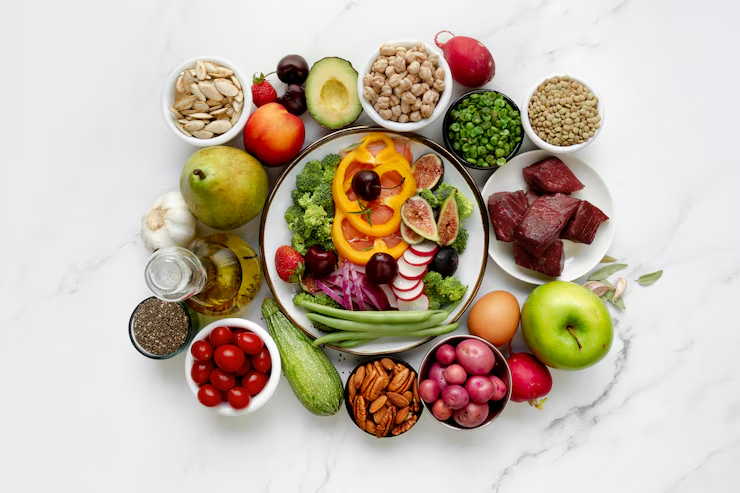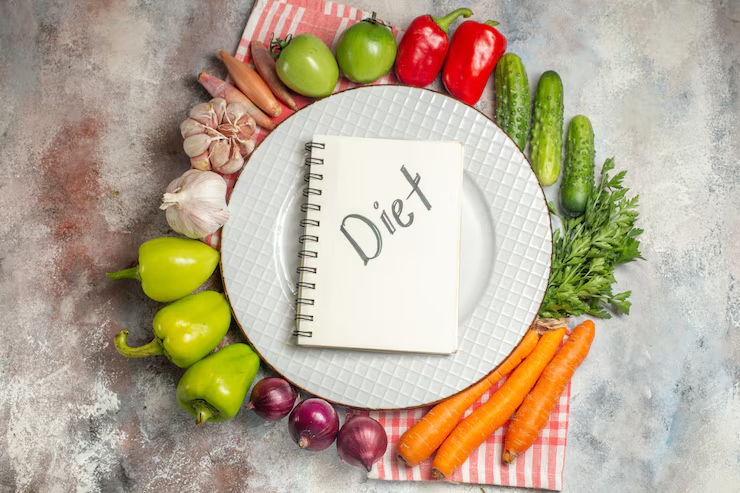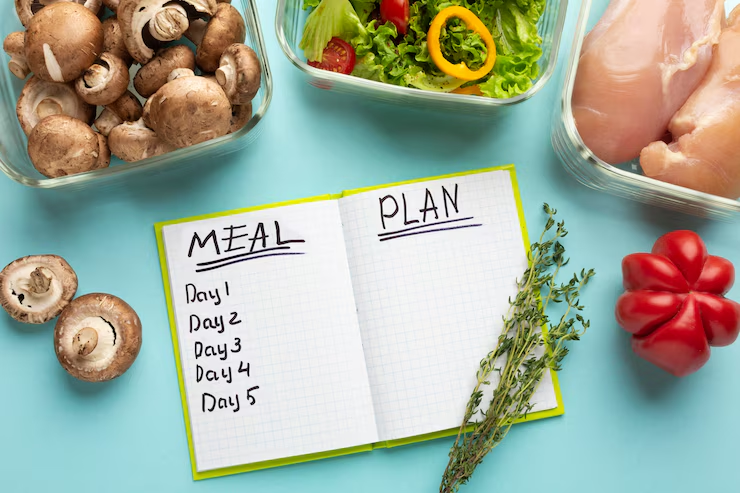Diabetes is one of the most widespread chronic conditions worldwide, impacting people of all ages and backgrounds. Managing blood sugar levels effectively is crucial to preventing long-term complications such as heart disease, kidney damage, and nerve issues. One of the most powerful tools for controlling diabetes is adopting a well-structured diabetes diet.
A proper diabetes diet focuses on whole, nutrient-dense foods that help stabilize blood glucose levels. This includes high-fiber vegetables, lean proteins, whole grains, and healthy fats while limiting refined sugars and processed carbohydrates. Consistent meal timing and portion control also play key roles in maintaining balanced blood sugar throughout the day.
Following a strategic diabetes diet not only helps manage the condition but also promotes overall health, energy, and well-being. Paired with regular physical activity and routine monitoring, it forms the foundation of a sustainable lifestyle for anyone looking to prevent or control diabetes effectively.
Eating right isn’t just about limiting sugar. It involves choosing foods that regulate blood glucose levels, support energy, promote heart health, and improve overall well-being. Whether you’re newly diagnosed with diabetes or looking to optimize your current health regimen, this guide will walk you through everything you need to know about a diabetes-friendly diet—with the top 8 science-backed tips to keep your blood sugar in check.
What Is a Diabetes Diet ?

A diabetes diet isn’t about strict rules or deprivation—it’s a practical and flexible approach to eating that helps regulate blood sugar levels. It focuses on choosing foods that nourish the body while maintaining steady glucose levels throughout the day. By following a consistent eating pattern, individuals with diabetes can reduce the risk of complications and improve overall health.
At the heart of a good diabetes diet is balance. It emphasizes nutrient-dense foods in appropriate portions, eaten at regular intervals. This helps prevent blood sugar spikes and crashes, keeping energy levels stable. Key components include complex carbohydrates such as whole grains, legumes, fruits, and vegetables, which are digested slowly and offer long-lasting fuel.
Including lean protein sources—like poultry, fish, tofu, and beans—supports muscle health and helps control hunger. Healthy fats from nuts, seeds, avocado, and olive oil also play an important role, providing satiety and supporting heart health.
Minimizing added sugars and processed foods is essential for anyone following a diabetes diet. These can cause rapid glucose spikes, increasing the risk of complications. A thoughtful, well-balanced diabetes diet supports both blood sugar control and long-term wellness.
Why Is Diet So Important for Diabetics ?
For individuals with type 1, type 2, or prediabetes, following a structured diabetes diet is essential for effective health management. Diet has a direct impact on blood sugar levels, and making the right food choices can stabilize glucose, boost energy, and prevent severe complications over time.
One major benefit of a diabetes diet is improved weight management. Maintaining a healthy weight can significantly enhance insulin sensitivity and, in some cases, even lead to the reversal of type 2 diabetes. Choosing fiber-rich foods, lean proteins, and healthy fats helps keep you full and satisfied without spiking blood sugar.
A well-planned diabetes diet also supports cardiovascular health. Since people with diabetes are more vulnerable to heart disease, eating foods that reduce LDL (bad) cholesterol and lower blood pressure is crucial. This includes limiting sodium, unhealthy fats, and processed foods.
In addition to preventing complications like retinopathy, neuropathy, and kidney damage, a consistent diabetes diet boosts overall energy levels. With balanced meals, individuals experience reduced fatigue and improved physical and mental performance—making daily life healthier and more manageable.
Top 8 Effective Diabetes Diet Tips
Here are eight powerful and practical tips to manage diabetes through diet effectively.
Focus on Low-Glycemic Index (GI) Foods

The glycemic index (GI) is a valuable tool for anyone following a diabetes diet. It ranks carbohydrates based on how quickly they raise blood sugar levels after consumption. Foods with a high GI cause rapid spikes in blood glucose, while low-GI foods result in slower, more stable increases.
Including low-GI foods into your diabetes diet helps maintain steady energy levels and reduces the risk of complications. Examples include whole grains, legumes, non-starchy vegetables, and most fruits. These foods are digested more slowly, leading to better blood sugar control throughout the day.
By focusing on low-GI options, a diabetes diet becomes more effective in managing both type 1 and type 2 diabetes. It not only helps regulate glucose levels but also supports weight management and heart health, contributing to long-term wellness and disease prevention.
Examples of low-GI foods:
Legumes (beans, lentils)
Non-starchy vegetables (broccoli, spinach, carrots)
Whole grains (quinoa, barley, oats)
Most fruits (berries, apples, oranges)
Why it works: These foods are absorbed slowly, providing sustained energy without spiking glucose levels.
Choose Complex Carbohydrates Over Simple Carbs
Carbohydrates are an important part of any balanced diet, even for those managing diabetes. In a well-planned diabetes diet, the focus isn’t on avoiding carbs altogether, but on choosing the right type. Complex carbohydrates, such as whole grains, legumes, and vegetables, are rich in fiber and digest more slowly, helping to stabilize blood sugar levels.
Simple carbohydrates, on the other hand, like white bread, sugary snacks, and soda, break down quickly and can cause rapid spikes in blood glucose. For people following a diabetes diet, limiting these simple carbs is essential to maintaining consistent energy and avoiding complications.
Including the right carbohydrates in a diabetes diet ensures your body gets the fuel it needs without the glucose swings. By emphasizing fiber-rich, nutrient-dense foods, you can support better blood sugar control, promote satiety, and contribute to overall metabolic health.
Swap this:
White bread ➝ Whole-grain or sprouted bread
Sugary cereals ➝ Oats with nuts and berries
White rice ➝ Brown rice or quinoa
Pro tip: Always pair carbohydrates with protein or fat to slow glucose absorption.
Eat More Fiber-Rich Foods

Fiber is a crucial component of a healthy diabetes diet, offering multiple benefits for blood sugar management. Unlike simple carbs, fiber slows the digestive process, which helps prevent rapid glucose absorption and reduces the risk of blood sugar spikes after meals.
Soluble fiber, found in foods like oats, beans, apples, and flaxseeds, forms a gel-like substance in the gut that slows down digestion even further. This effect makes it especially valuable in a diabetes diet, as it promotes better glucose control and supports heart health by lowering cholesterol.
Insoluble fiber, found in whole grains, vegetables, and nuts, adds bulk to the stool and supports digestive health. Together, both types of fiber enhance satiety, making you feel full longer and reducing overall calorie intake—an important factor in weight management. Including high-fiber foods in a diabetes diet is a smart, natural way to promote long-term metabolic health.
Great fiber sources:
Vegetables (especially leafy greens)
Berries
Whole grains
Legumes
Bonus: Fiber also promotes a healthy gut microbiome, which is linked to improved insulin sensitivity.
Include Healthy Fats in Every Meal
Healthy fats play a valuable role in a balanced diabetes diet. They help increase satiety, making you feel full for longer periods and reducing the urge to overeat. This is especially helpful for blood sugar control and weight management, both of which are crucial for people with diabetes.
In addition to curbing hunger, healthy fats slow the absorption of carbohydrates, which helps prevent sudden spikes in blood glucose levels. Including sources like avocados, nuts, seeds, and olive oil in your diabetes diet can support steadier energy and improved metabolic function throughout the day.
Choosing unsaturated fats over saturated and trans fats is important for maintaining heart health, another key concern for those with diabetes. When incorporated wisely, healthy fats complement other essential elements of a diabetes diet, creating a balanced approach that supports long-term blood sugar stability and overall wellness.
Best sources:
Avocados
Olive oil
Nuts (almonds, walnuts)
Seeds (chia, flaxseed)
Fatty fish (salmon, mackerel)
Avoid: Trans fats and hydrogenated oils often found in packaged snacks and fried foods.
Practice Portion Control and Meal Timing

Managing portion sizes is a fundamental part of an effective diabetes diet. Eating large portions, even of healthy foods, can lead to excessive calorie intake and unwanted blood sugar spikes. Controlling how much you eat at each meal helps maintain stable glucose levels and supports weight management.
Using smaller plates, measuring food, and being mindful of hunger cues are practical ways to manage portions. These habits promote better awareness of what and how much you’re eating, which is especially important in a diabetes diet aimed at long-term blood sugar control.
Consistently practicing portion control also reduces the risk of insulin resistance and can improve overall energy levels. When combined with nutrient-rich, balanced meals, portion control enhances the effectiveness of a diabetes diet, making it easier to manage or even prevent the progression of type 2 diabetes and its related complications.
Tips:
Use smaller plates
Follow the “plate method” (half veggies, one-quarter protein, one-quarter carbs)
Don’t skip meals
Aim for consistent meal times to align with medication or insulin use
Mindful eating helps you listen to hunger cues and reduces the risk of binge eating.
Limit Added Sugars and Refined Foods
Sugar isn’t only found in obvious treats like cakes or candies—it often hides in everyday items like sauces, salad dressings, and packaged snacks. For anyone following a diabetes diet, recognizing hidden sugars is essential to maintaining stable blood glucose levels and avoiding unexpected spikes.
Many processed foods contain added sugars under names like high-fructose corn syrup, dextrose, or maltose. Reading labels carefully is a key habit in a successful diabetes diet, helping you make informed choices that align with your health goals.
Reducing hidden sugars supports better insulin sensitivity and overall energy levels. By focusing on whole, unprocessed foods and being mindful of ingredients, a diabetes diet becomes more effective in managing the condition while still allowing room for variety and flavor in daily meals.
Avoid or reduce:
Soda and sweetened drinks
Candy, cakes, pastries
White bread and pasta
Flavored yogurts with added sugar
Store-bought sauces (BBQ, ketchup)
Use natural sweeteners like stevia or monk fruit if needed, and always read labels for hidden sugars (look for names like corn syrup, dextrose, sucrose).
Stay Hydrated with Water (Not Sugary Drinks)

Staying well-hydrated is an important yet often overlooked part of a healthy diabetes diet. Dehydration can lead to a rise in blood sugar levels, as the body tries to conserve water by reducing urine output, causing glucose to become more concentrated in the bloodstream.
Water is the best choice for hydration, especially for individuals managing diabetes. Unlike sugary beverages or even some juices, water doesn’t raise blood glucose levels. Including plenty of water throughout the day supports kidney function and helps the body flush out excess sugar through urine, making it a vital component of a balanced diabetes diet.
For added flavor without added sugar, infusing water with lemon, cucumber, or fresh herbs can be a smart alternative. Prioritizing hydration not only supports blood sugar control but also enhances digestion and energy—key benefits of an effective diabetes diet.
What to drink:
Water
Unsweetened herbal tea
Sparkling water with lemon
Black coffee (in moderation)
Avoid:
Fruit juices (even “natural” ones spike glucose)
Soda
Energy drinks
Sweetened coffee drinks
Pro tip: Drinking a glass of water before meals may help with portion control.
Plan and Prepare Your Meals Ahead
One of the biggest challenges for individuals following a diabetes diet is making healthy food choices when hunger strikes or when they’re on the go. In these moments, it’s easy to reach for processed snacks or fast food, which can cause blood sugar spikes and derail progress.

Meal prepping is a practical solution that supports the goals of a diabetes diet. By preparing balanced meals and snacks in advance, you have full control over ingredients, portion sizes, and nutritional content. This helps maintain stable blood glucose levels and avoids last-minute unhealthy decisions.
Whether it’s prepping vegetables, cooking lean proteins, or packing whole-grain snacks, meal prep ensures you’re always ready with diabetes-friendly options. It’s a key strategy that complements a well-planned diabetes diet, making it easier to stay on track, save time, and support long-term blood sugar management.
Tips:
Plan weekly menus
Cook in batches and freeze portions
Keep healthy snacks handy (like nuts, boiled eggs, cut veggies)
Best Foods for a Diabetes Diet
Here is your list of recommended foods for a diabetes diet in a clear table format:
| Food Group | Recommended Foods |
| Vegetables (Non-Starchy) | Spinach, Broccoli, Cauliflower, Kale, Bell peppers |
| Lean Proteins | Chicken, Turkey, Eggs, Tofu, Fish |
| Whole Grains | Steel-cut oats, Quinoa, Brown rice, Millet |
| Fruits (in moderation) | Berries, Apples, Pears, Oranges |
| Healthy Fats | Avocados, Olive oil, Chia seeds, Flaxseeds, Walnuts |
These foods help regulate blood sugar, support energy levels, and promote overall health as part of a balanced diabetes diet.
Sample 1-Day Diabetes Meal Plan
Here is a simple, balanced day of eating for someone following a diabetes diet, presented in table form:
| Meal | Menu |
| Breakfast | Scrambled eggs with spinach and tomatoes1 slice whole-grain toastA small appleHerbal tea or black coffee |
| Morning Snack | A handful of almonds |
| Lunch | Grilled chicken salad (mixed greens, olive oil dressing, cucumbers, bell peppers)1/2 cup cooked quinoa |
| Afternoon Snack | Greek yogurt (unsweetened) with chia seeds |
| Dinner | Baked salmon with lemon and herbsSteamed broccoli and carrots1/2 cup brown rice |
| Evening Snack (if needed) | Sliced cucumber with hummus or a boiled egg |
This sample meal plan supports blood sugar balance and overall health as part of a nutritious diabetes diet.
Diabetes Diet for Special Cases
For Type 1 Diabetes: Carbohydrate counting is a key part of a successful diabetes diet for those with type 1 diabetes. Matching carb intake with insulin doses helps maintain stable blood sugar levels. Consistent meal timing and balanced meal composition—combining carbs, protein, and healthy fats—are also essential for effective glucose control.
For Type 2 Diabetes: A well-structured diabetes diet for type 2 diabetes focuses on weight management through calorie control. Losing excess weight can significantly improve insulin sensitivity and may even reverse the condition in some cases. Emphasizing high-fiber and low-glycemic index foods supports blood sugar balance and promotes long-term health.
For Gestational Diabetes: In gestational diabetes, following a careful diabetes diet is important to protect both mother and baby. Eating small, frequent meals throughout the day helps manage blood sugar. It’s best to avoid large carbohydrate loads and monitor glucose levels regularly to ensure stability.
Conclusion

Managing diabetes isn’t about deprivation—it’s about making smart, nourishing choices that support your body’s natural balance. A well-planned diabetes diet focuses on real, whole foods that help regulate blood sugar, boost energy, and promote overall wellness without sacrificing flavor or satisfaction.
With the right knowledge, consistent meal planning, and healthy habits, you can take control of your condition and feel your best each day. Whether it’s choosing complex carbs, including fiber-rich vegetables, or staying hydrated, every step supports the goals of a balanced diabetes diet and empowers you to make informed decisions.
By following these top 8 diet tips for diabetes, you lay the foundation for long-term success. Remember, consistency is key to seeing results. For best outcomes, consult a registered dietitian or healthcare provider to tailor your diabetes diet to your individual needs—and embrace your journey to a healthier, more confident life.
FAQs
- What is the best diet for someone with diabetes ?
A balanced diet with fiber-rich vegetables, whole grains, lean proteins, and healthy fats is ideal. Avoiding added sugars and refined carbs is also important to maintain stable blood sugar levels. - Can people with diabetes eat fruit ?
Yes, people with diabetes can eat fruit in moderation. Low-glycemic fruits like berries, apples, and oranges are better choices as they have less impact on blood sugar. - How often should someone with diabetes eat ?
It’s best to eat regular meals and snacks every 3–5 hours to help keep blood sugar stable. Skipping meals can lead to drops or spikes in glucose levels. - Are carbohydrates bad for diabetes ?
No, but the type of carbohydrate matters. Choose complex carbs like oats, quinoa, and beans instead of white bread or sugary snacks. - Can a diabetes diet help reverse type 2 diabetes ?
In some cases, weight loss through a healthy diet and exercise can improve insulin sensitivity and even lead to remission of type 2 diabetes.


